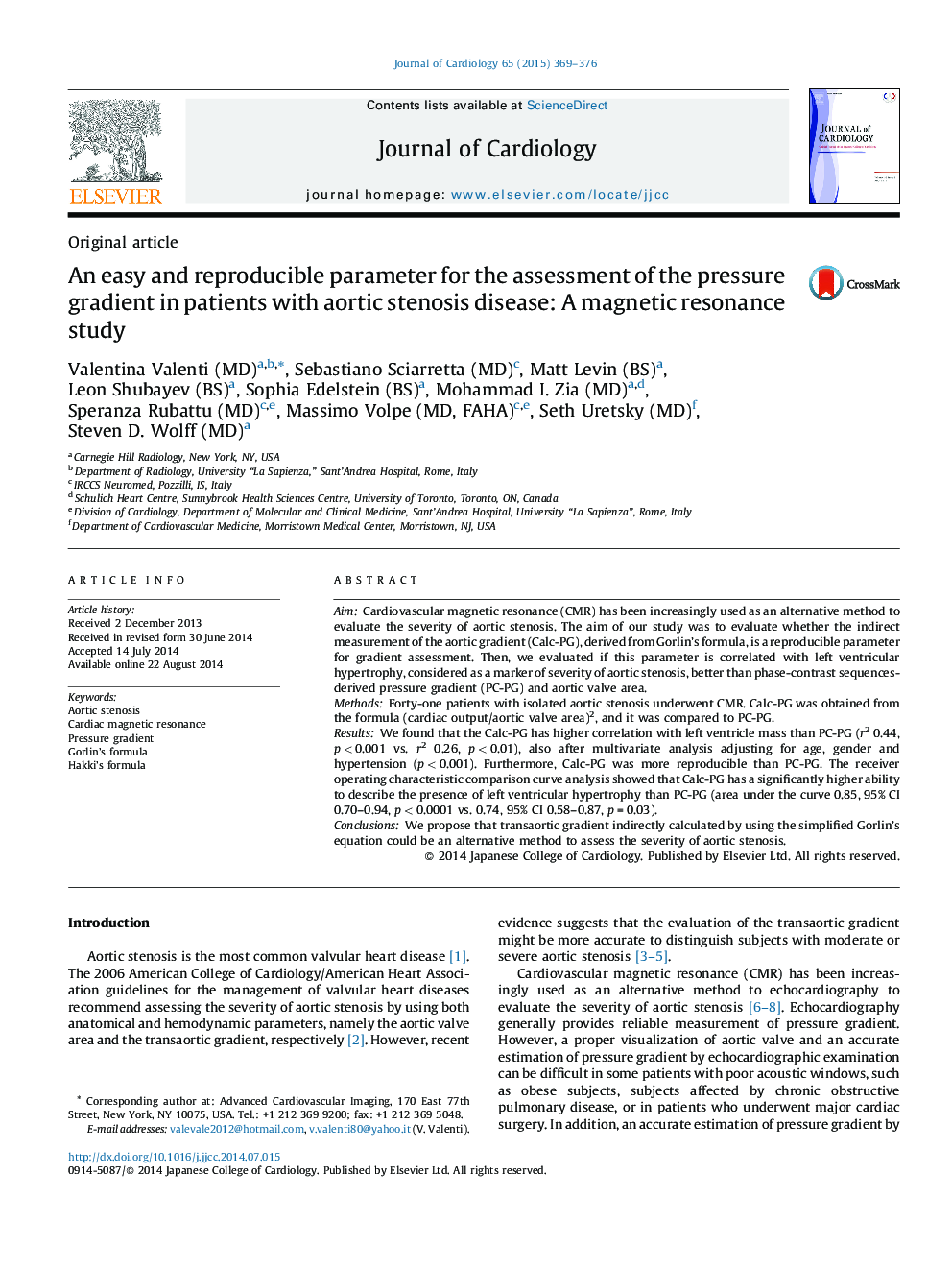| Article ID | Journal | Published Year | Pages | File Type |
|---|---|---|---|---|
| 2962971 | Journal of Cardiology | 2015 | 8 Pages |
AimCardiovascular magnetic resonance (CMR) has been increasingly used as an alternative method to evaluate the severity of aortic stenosis. The aim of our study was to evaluate whether the indirect measurement of the aortic gradient (Calc-PG), derived from Gorlin's formula, is a reproducible parameter for gradient assessment. Then, we evaluated if this parameter is correlated with left ventricular hypertrophy, considered as a marker of severity of aortic stenosis, better than phase-contrast sequences-derived pressure gradient (PC-PG) and aortic valve area.MethodsForty-one patients with isolated aortic stenosis underwent CMR. Calc-PG was obtained from the formula (cardiac output/aortic valve area)2, and it was compared to PC-PG.ResultsWe found that the Calc-PG has higher correlation with left ventricle mass than PC-PG (r2 0.44, p < 0.001 vs. r2 0.26, p < 0.01), also after multivariate analysis adjusting for age, gender and hypertension (p < 0.001). Furthermore, Calc-PG was more reproducible than PC-PG. The receiver operating characteristic comparison curve analysis showed that Calc-PG has a significantly higher ability to describe the presence of left ventricular hypertrophy than PC-PG (area under the curve 0.85, 95% CI 0.70–0.94, p < 0.0001 vs. 0.74, 95% CI 0.58–0.87, p = 0.03).ConclusionsWe propose that transaortic gradient indirectly calculated by using the simplified Gorlin's equation could be an alternative method to assess the severity of aortic stenosis.
